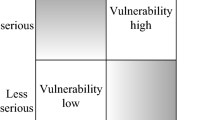Abstract
In order to relieve the increasing serious traffic pressure, the open of urban districts has been put on the agenda, and computer simulation is an effective method to evaluate the effect of openness. The influence of different types of districts on urban road capacity under different degrees of openness is discussed in this paper. Four evaluation index, including: the road capacity expansion degree, traffic instability variation coefficient, simplified origin and destination connectivity and path betweenness are established, simulation models of multi-objective decision making and traffic network vulnerability based on evaluation indexes are built. Make full use of the advantages of computer simulations with the big data of urban districts. Finally, the influence of three different types of typical residential areas on the capacity of the surrounding roads before and after the opening is analyzed and evaluated under computer simulation results, which illuminate the effectiveness of these models.





Similar content being viewed by others
References
Darong, Huang, Libing, Shen, & Ling, Zhao. (2015). Vulnerability analysis of urban road network based on complex network theory. Journal of Chongqing Jiaotong University, 34(1), 110–115.
Bao, Zhong Kui, Ma, Chuang, Xiang, Bing Bing, et al. (2017). Identification of influential nodes in complex networks: Method from spreading probability viewpoint. Physical A: Statistical Mechanics and its Application., 468(3), 391–397.
Bell, Michael G. H., Kurauchi, Fumitaka, Perera, Supun, et al. (2017). Investigating transport network vulnerability by capacity weighted spectral analysis. Transportation Research Part B: Methodological, 99(3), 251–266.
Tasic, Ivana, Elvik, Rune, & Brewer, Simon. (2017). Exploring the safety in numbers effect for vulnerable road users on a macroscopic scale. Accident Analysis and Prevention, 109(12), 36–46.
Hajiahmadi, Mohammad, Haddad, Jack, De Schutter, Bart, et al. (2015). Optimal hybrid perimeter and switching plans control for urban traffic networks. IEEE Transactions on Control Technology, 23(2), 464–478.
Zhou, Z., De Schutter, B., Lin, S., et al. (2017). Two-level hierarchical model-based predictive control for large-scale urban traffic networks. IEEE Transactions on Control Systems Technology, 25(2), 496–508.
Abadi, Afshin, Rajabioun, Tooraj, & Ioannou, Petros A. (2015). Traffic flow prediction for road transportation networks with limited traffic data. IEEE Transactions on Intelligent Transportation System, 16(2), 653–662.
Liebig, Thomas, Piatkowski, Nico, Bockermann, Christian, et al. (2017). Dynamic route planning with real-time traffic predictions. Information Systems, 64(3), 258–265.
Tak, Sehyun, Woo, Soomin, & Yeo, Hwasoo. (2016). Data-driven imputation method for traffic data in sectional units of road links. IEEE Transactions on Intelligent Transportation System, 17(6), 1762–1771.
Chiou, Suh-Wen. (2014). Optimal signal-setting for road network with maximum capacity. Information Sciences, 273(7), 287–303.
Lu, Y. (2015). Model and algorithm for traffic network design by the user qquilibrium allocation. International Journal of Smart Home, 9(6), 151–162.
Tian, Zhao, Jia, Lin, Dong, Honghui, et al. (2016). Analysis of urban road traffic network based on complex network. Procedia Engineering, 12(7), 537–546.
Tettamanti, Tamas, Luspay, Tamas, Kulcsar, Balazs, et al. (2014). Robust control for urban road traffic networks. IEEE Transactions on Intelligent Transportation System, 15(1), 385–398.
Author information
Authors and Affiliations
Corresponding author
Rights and permissions
About this article
Cite this article
Liu, Y., Wang, R. & Li, J. Research on the Influence of District Opening of Urban Road Base on Multi-decision and Network Vulnerability Models. Wireless Pers Commun 103, 379–390 (2018). https://doi.org/10.1007/s11277-018-5448-4
Published:
Issue Date:
DOI: https://doi.org/10.1007/s11277-018-5448-4




